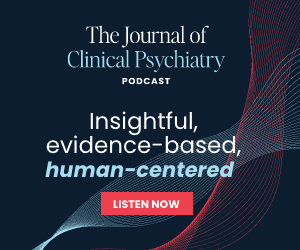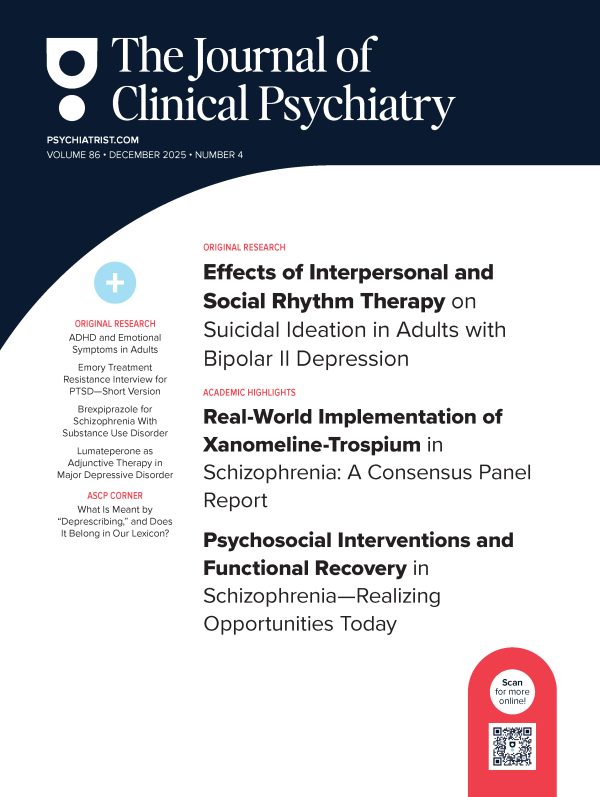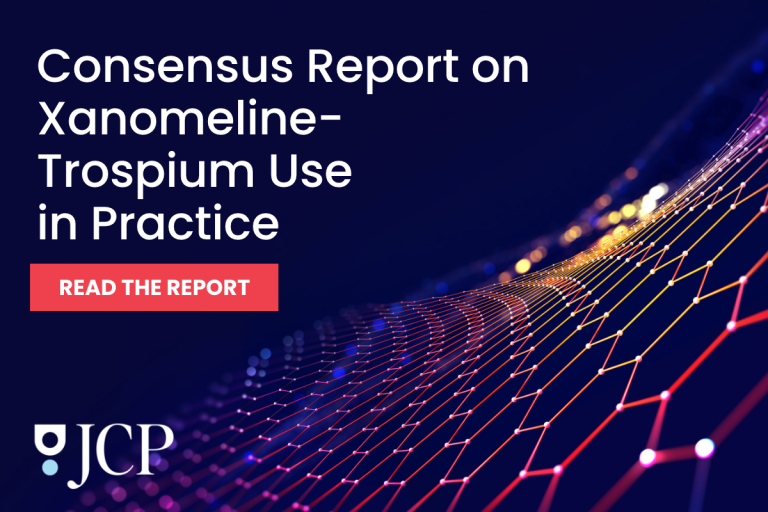Abstract
Introduction: Suicide is a leading cause of death globally. Although prior suicidal behavior is the strongest predictor of future attempts, clinical outcomes following a first suicide attempt (FSA) remain poorly understood. This study evaluates 5-year outcomes after an FSA, focusing on recurrence, lethality, and mortality to address gaps in understanding clinical trajectories and risk factors.
Methods: A cohort of 387 FSA patients was followed for 5 years. Sociodemographic and clinical data were collected at baseline and during follow-up. Outcomes included recurrence, lethality of subsequent attempts, and all-cause mortality. Multivariable logistic and Cox regression models were used to identify risk factors.
Results: During follow-up, 37.2% of patients experienced recurrence, with 27.8% classified as frequent reattempters (≥3 attempts). Overall, 5.7% of participants died, including 1.8% by suicide. High-lethality FSAs were observed in 17.3% of the sample and were strongly associated with alcohol use (odds ratio [OR], 2.142; 95% CI, 1.231–3.724; P=.021). Female sex was a significant risk factor for multiple reattempts (OR, 2.388; 95% CI, 1.036–5.507; P=.041). High-lethality FSAs significantly increased the risk of suicide deaths (hazard ratio [HR], 5.430; 95% CI, 1.189–24.792; P=.029), while older age was associated with a higher risk of nonsuicidal deaths (HR, 1.093; 95% CI, 1.035–1.153; P=.001).
Conclusions: Lethality, recurrence, and mortality following an FSA are influenced by distinct risk factors. Alcohol use predicted high-lethality FSAs, female sex predicted multiple reattempts, high-lethality FSAs predicted suicide deaths, and age predicted nonsuicidal deaths. Targeted interventions for these high-risk populations are needed.
J Clin Psychiatry 2025;86(4):24m15754
Author affiliations are listed at the end of this article.
Members Only Content
This full article is available exclusively to Professional tier members. Subscribe now to unlock the HTML version and gain unlimited access to our entire library plus all PDFs. If you’re already a subscriber, please log in below to continue reading.
References (61)

- Suicide worldwide in 2019: Global Health Estimates. World Health Organization; 2019. Accessed August 19, 2025:4–9. https://www.who.int/publications/i/item/9789240026643.
- Sher L, Oquendo MA. Suicide: an overview for clinicians. Med Clin North Am. 2023;107(1):119–130. PubMed CrossRef
- Franklin JC, Ribeiro JD, Fox KR, et al. Risk factors for suicidal thoughts and behaviors: a meta-analysis of 50 years of research. Psychol Bull. 2017;143(2):187–232. PubMed CrossRef
- Irigoyen M, Porras-Segovia A, Galván L, et al. Predictors of re-attempt in a cohort of suicide attempters: a survival analysis. J Affect Disord. 2019;247:20–28. PubMed CrossRef
- Parra-Uribe I, Blasco-Fontecilla H, Garcia-Parés G, et al. Risk of re-attempts and suicide death after a suicide attempt: a survival analysis. BMC Psychiatry. 2017;17(1):1–11. PubMed
- Pemau A, Marin-Martin C, Diaz-Marsa M, et al. Risk factors for suicide reattempt: a systematic review and meta-analysis. Psychol Med. 2024;54(9):1897–1904. PubMed CrossRef
- de la Torre-Luque A, Pemau A, Ayad-Ahmed W, et al. Risk of suicide attempt repetition after an index attempt: a systematic review and meta-analysis. Gen Hosp Psychiatry. 2023;81:51–56. PubMed
- Kreitman N, Casey P. Repetition of parasuicide: an epidemiological and clinical study. Br J Psychiatry. 1988;153:792–800. PubMed CrossRef
- Carroll R, Metcalfe C, Gunnell D. Hospital management of self-harm patients and risk of repetition: systematic review and meta-analysis. J Affect Disord. 2014;168:476–483. PubMed CrossRef
- Liu BP, Lunde KB, Jia CX, et al. The short-term rate of non-fatal and fatal repetition of deliberate self-harm: a systematic review and meta-analysis of longitudinal studies. J Affect Disord. 2020;273:597–603. PubMed CrossRef
- Owens D, Horrocks J, House A. Fatal and non-fatal repetition of self-harm. Systematic review. Br J Psychiatry. 2002;181(9):193–199. PubMed CrossRef
- Oh SH, Kim HJ, Kim SH, et al. Which deliberate self-poisoning patients are most likely to make high-lethality suicide attempts? Int J Ment Health Syst. 2015;9:35. PubMed CrossRef
- Levi-Belz Y, Beautrais A. Serious suicide attempts. Crisis. 2016;37(4):299–309. PubMed CrossRef
- Aguglia A, Solano P, Parisi VM, et al. Predictors of relapse in high lethality suicide attempters: a six-month prospective study. J Affect Disord. 2020;271:328–335. PubMed CrossRef
- Czernin S, Vogel M, Flückiger M, et al. Cost of attempted suicide: a retrospective study of extent and associated factors. Swiss Med Wkly. 2012;142:w13648. PubMed CrossRef
- Mann JJ, Apter A, Bertolote J, et al. Suicide prevention strategies: a systematic review. JAMA. 2005;294(16):2064–2074. PubMed CrossRef
- Gvion Y, Levi-Belz Y. Serious suicide attempts: systematic review of psychological risk factors. Front Psychiatry. 2018;9(3):56. PubMed CrossRef
- Beautrais AL. Subsequent mortality in medically serious suicide attempts: a 5 year follow-up. Aust N Z J Psychiatry. 2003;37(5):595–599. PubMed CrossRef
- Beautrais AL. Further suicidal behavior among medically serious suicide attempters. Suicide Life Threat Behav. 2004;34(1):1–11. PubMed CrossRef
- Cai Z, Junus A, Chang Q, et al. The lethality of suicide methods: a systematic review and meta-analysis. J Affect Disord. 2022;300:121–129. PubMed CrossRef
- Irigoyen-Otiñano M, Puigdevall-Ruestes M, Mur-Laín M, et al. Absence of association between the level of lethality and the recidivism of suicide attempts in a Spanish province. Actas Esp Psiquiatr. 2019;47(5):179–189. PubMed
- Nicolau-Subires E, Llorca-Bofí V, Arenas-Pijoan L, et al. Lethality and recidivism in suicide attempters: a longitudinal study. J Psychiatr Res. 2025;189:148–156. PubMed CrossRef
- Park CHK, Lee JW, Lee SY, et al. Suicide risk factors across suicidal ideators, single suicide attempters, and multiple suicide attempters. J Psychiatr Res. 2020;131:1–8. PubMed CrossRef
- Tachikawa H, Takahashi S, Nemoto K, et al. Predictive factors for recurrent suicide attempts: evidence from the ACTION-J study. PCN Rep. 2022;1(2):e7. PubMed CrossRef
- Quesada-Franco M, Braquehais MD, Valero S, et al. A comparison of medically serious suicide attempters admitted to intensive care units versus other medically serious suicide attempters. BMC Psychiatry. 2022;22(1):805–810. PubMed CrossRef
- Aguglia A, Solano P, Parisi VM, et al. Predictors of relapse in high lethality suicide attempters: a six-month prospective study. J Affect Disord. 2020;271:328–335. PubMed CrossRef
- Irigoyen-Otiñano M, Llorca-Bofí V, Adrados-Pérez M, et al. The MCOSUL Cohort: lethality, recurrence, and mortality in suicide attempts in the Lérida Region, Spain—Rationale, objectives, and preliminary findings. Psiquiatr Biológica. 2024:100548.
- World Medical Association. World Medical Association Declaration of Helsinki: ethical principles for medical research involving human subjects. JAMA. 2013;310(20):2191–2194. PubMed CrossRef
- von Elm E, Altman DG, Egger M, et al. The Strengthening the Reporting of Observational Studies in Epidemiology (STROBE) statement: guidelines for reporting observational studies. J Clin Epidemiol. 2008;61(4):344–349. PubMed CrossRef
- American Psychiatric Association. DSM-IV Text Revision (DSM-IV-TR). 4th ed. Text Rev. American Psychiatric Association; 2000.
- Silverman MM. The language of suicidology. Suicide Life Threat Behav. 2006;36(5):519–532. PubMed CrossRef
- Beautrais AL. Suicides and serious suicide attempts: two populations or one? Psychol Med. 2001;31(5):837–845. PubMed CrossRef
- Beck AT, Schuyler D, Herman I. Development of suicidal intent scales. In: BecK AT, Resnik HL, Lettieri DJ, eds. The Prediction of Suicide. Charles Press Publishers; 1974:45–58.
- Wisniewski SR, Leon AC, Otto MW, et al. Prevention of missing data in clinical research studies. Biol Psychiatry. 2006;59(11):997–1000. PubMed CrossRef
- Hidalgo B, Goodman M. Multivariate or multivariable regression? Am J Public Health. 2013;103(1):39–40. PubMed CrossRef
- Jafari M, Ansari-Pour N. Why, when and how to adjust your P values? Cell J. 2019;20(4):604–607. PubMed CrossRef
- Esmaeili ED, Farahbakhsh M, Sarbazi E, et al. Predictors and incidence rate of suicide re-attempt among suicide attempters: a prospective study. Asian J Psychiatr. 2022;69:102999. PubMed CrossRef
- Bommersbach TJ, Olfson M, Rhee TG. National trends in emergency department visits for suicide attempts and intentional self-harm. Am J Psychiatry. 2024;181(8):741–752. PubMed CrossRef
- Instituto Nacional de Estadística. 2023
- Demesmaeker A, Chazard E, Vaiva G, et al. Risk factors for reattempt and suicide within 6 months after an attempt in the French ALGOS cohort: a survival tree analysis. J Clin Psychiatry. 2021;82(1):20m13589. PubMed CrossRef
- Qadeer Shah A, Prasad D, Caropreso L, et al. The comorbidity between borderline personality disorder (BPD) and generalized anxiety disorder (GAD): a systematic review and meta-analysis. J Psychiatr Res. 2023;164:304–314. PubMed CrossRef
- Cohen LJ, Imbastaro B, Peterkin D, et al. A suicide-specific diagnosis—the case for. Crisis. 2023;44(3):175–182. PubMed CrossRef
- Galynker, I, Bloch-Elkouby, S, Cohen, LJ. Suicide crisis syndrome: a specific diagnosis to aid suicide prevention. World Psychiatry. 2024;23(3):362–363. PubMed CrossRef
- Bloch-Elkouby S, Yanez N, Chennapragada L, et al. The narrative crisis model of suicide: a novel and empirically grounded diathesis-stress model of suicide. Suicide Risk Assess Prev. 2022;1-16;151–166.
- Bloch-Elkouby S, Rogers ML, Goncearenco I, et al. The narrative crisis model of suicide: a review of empirical evidence for an innovative dynamic model of suicide and a comparison with other theoretical frameworks. Personalized Med Psychiatry. 2024;45:100131.
- Bloch-Elkouby S, Barzilay S, Gorman BS, et al. The Revised Suicide Crisis Inventory (SCI-2): validation and assessment of prospective suicidal outcomes at one month follow-up. J Affect Disord. 2021;295:1280–1291. PubMed CrossRef
- Blasco-Fontecilla H, Jaussent I, Olié E, et al. A cross-sectional study of major repeaters: a distinct phenotype of suicidal behavior. Prim Care Companion CNS Disord. 2014;16(4). doi: 4088/PCC.14M01633 PubMedCrossRef
- Irigoyen-Otiñano M, Puigdevall-Ruestes M, Prades-Salvador N, et al. Further evidence for major repeaters as a subgroup of suicide attempters. Rev Psiquiatr Salud Ment. 2018;11(1):19–26.
- Amiri S, Behnezhad S. Alcohol use and risk of suicide: a systematic review and meta-analysis. J Addict Dis. 2020;38(2):200–213. PubMed CrossRef
- Lange S, Jiang H, Kaplan MS, et al. Association between Acute alcohol use and firearm-involved suicide in the United States. JAMA Netw Open. 2023;6(3):e235248–e235248.3;6(3):e235248–e235248. PubMed CrossRef
- Castillo-Carniglia A, Keyes KM, Hasin DS, et al. Psychiatric comorbidities in alcohol use disorder. Lancet Psychiatry. 2019;6(12):1068–1080. PubMed CrossRef
- Nagin DS. Group-based trajectory modeling: an overview. Ann Nutr Metab. 2014;65(2–3):205–210. PubMed CrossRef
- Hirot F, Ali A, Azouvi P, et al. Five-year mortality after hospitalisation for suicide attempt with a violent method. J Psychosom Res. 2022;159:110949. PubMed CrossRef
- Jokinen J, Talbäck M, Feychting M, et al. Life expectancy after the first suicide attempt. Acta Psychiatr Scand. 2018;137(4):287–295. PubMed CrossRef
- Suominen K, Isometsä E, Suokas J, et al. Completed suicide after a suicide attempt: a 37-year follow-up study. Am J Psychiatry. 2004;161(3):562–563. PubMed CrossRef
- Giner L, Jaussent I, Olié E, et al. Violent and serious suicide attempters: one step closer to suicide? J Clin Psychiatry. 2014;75(3):e191–e197. PubMed CrossRef
- Witt K, Pirkis J, Scott D, et al. Trajectories in suicide attempt method lethality over a five-year period: associations with suicide attempt repetition, all-cause, and suicide mortality. PloS One. 2021;16(1):e0245780. PubMed CrossRef
- Hawton K, Zahl D, Weatherall R. Suicide following deliberate self-harm: long-term follow-up of patients who presented to a general hospital. Br J Psychiatry. 2003;182(6):537–542. PubMed CrossRef
- Liu BP, Jia CX, Qin P, et al. Associating factors of suicide and repetition following self-harm: a systematic review and meta-analysis of longitudinal studies. eClinicalMedicine. 2022;49:101461. PubMed CrossRef
- Barker J, Oakes-Rogers S, Leddy A. What distinguishes high and low-lethality suicide attempts in older adults? A systematic review and meta-analysis. J Psychiatr Res. 2022;154:91–101. PubMed CrossRef
- Jordan JT, McNiel DE. Characteristics of persons who die on their first suicide attempt: results from the National Violent Death Reporting System. Psychol Med. 2020;50(8):1390–1397. PubMed CrossRef






